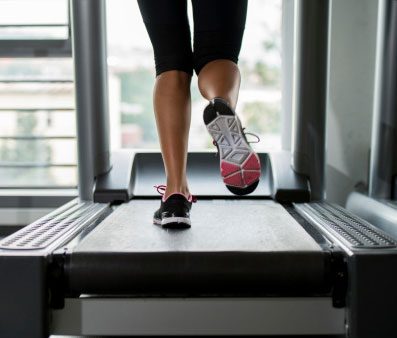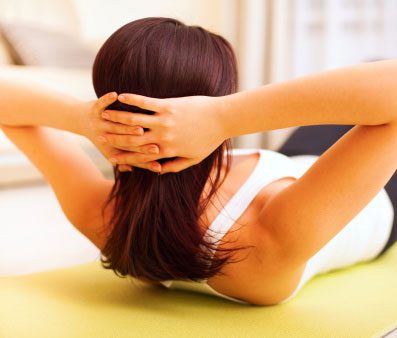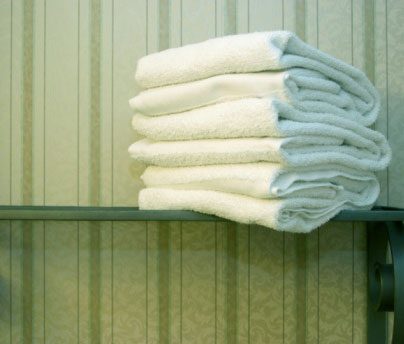
Plantar warts
What is it?
Plantar warts, or Verruca, are common viral infections that affect the soles of the feet and are caused by the human papiloma virus (HPV). It is estimated that eight to 10 percent of the population is infected with plantar warts at any given time.
“The infections are usually painless and look like small lesions or blisters on the weight-bearing surface of the feet, says chiropractor and chiropodist Dr. Ali Tabrizi, from PhysioMed Yorkdale in Toronto. Plantar warts develop when feet come into direct contact with the virus. There is a higher incidence of infections in places where the virus is left behind: in wet areas such as showers and pools. The virus usually goes away without any treatment in one to two years. Sometimes they remain for longer periods. Those that are immune compromised have a higher incidence of infection and difficulty fighting them off.
How to treat it:
You can try to avoid contracting warts by wearing flip flops in showers and change rooms and by using water shoes when you swim. If it’s already too late, Dr. Tibrizi recommends keeping the area dry and applying a prescription cream to the affected area. “Duct tape has also shown some efficacy in treating the plantar warts,” he says. A foot specialist can remove the wart with a surgical blade and apply medication on the area. Other options can be freezing the wart with liquid nitrogen, surgical removal, laser treatment or needling. If you think you may have plantar warts, see your chiropodist or podiatrist.

Athlete’s foot
What is it?
Athlete’s foot is caused by a common fungus found in nature called Trichophyton Rubrum. Symptoms include dry, itchy, burning, scaly skin and foul-smelling feet.
“The infection is caused by direct contact with the fungus. Those with higher incidence of sweating or poor hygiene have more frequent infections,” says Dr. Tabrizi. The fungus grows slowly and prefers dark areas with lots of moisture, like in between the toes. You can catch it in showers or by wearing shoes laced with the fungus.
How to treat it:
Prevention is key: if it gets into the toenails it can be very difficult to treat. “Take a change of clothes with you to the gym or dry yourself after you sweat,” says Dr. Tabrizi. “Keep your feet and your body dry. Wash your gym clothes immediately after you workout or at least within 24 hours.” Clothes that stay moist and in a dark area like a gym or hockey bag will give these microorganism a prime opportunity to grow.
If you already have symptoms, treat it by applying anti-fungal creams like ketoconazole or lamisil. Keep feet dry and use rubbing alcohol after showering to dry the feet and keep the fungus in check. Ultraviolet light can help eradicate the fungus in shoes and sandals. If the infection is stubborn, an oral medication can be prescribed.

Head lice
What is it:
Head lice are small wingless insects that have six legs and claws that grip onto the hair shaft. An adult louse is what transfers from person to person.
“Lice can only infest human hair and 98 percent of lice is spread by direct head-to-head contact,” says Andrea Hecht, a head lice specialist at Nit Works Inc., a new chain of salons that treats people with lice. Only two percent is transferred from other sources including brushes, combs, hats, towels and mats, but Hecht has treated clients who have caught it from the gym.
“If a person lays down on a towel, carpet, floor or mat at the gym within a 24-hour window where another person may have had head lice, they are at risk if an adult female is present and latches on to the hair,” she says.
Both male and female bugs are resistant to testosterone, so it is more common among women and those with long hair. In fact, lice even prefer clean hair. “Some common signs of lice are a tickling feeling around your head, itchy scalp, sensing the crawling motion of an insect, swelling behind the ears or swollen glands, mild fever, sores or bumps on the scalp, rash at the nape of the neck, irritability, difficulty sleeping, finding eggs on the hair shaft or bugs on the scalp,” says Hecht.
How to treat it:
There are several ways to treat lice, ranging from over-the-counter chemical products to suffocating live bugs by smothering the hair with mayonnaise, vinegar, olive oil, conditioner and essential oils. Andrea says using a non-toxic, plant-based enzyme to dissolve the nits and stun the live lice is the best and most effective option, in addition to combing using a high quality metal comb. “Head lice clinics that have expert technicians are a growing trend where safe, natural products and methodical combing techniques are used to remove lice in one treatment with some reduction combing that can be done at home to end the life cycle,” she says.
Prevention tips include taking a peek at your child throughout the week for signs of lice. Avoid sharing hats, brushes, helmets and other personal belongings, use your own towel, do not share pillows and avoid direct head-to-head contact with others. Repellent products are now available for daily use that contain mint, lavender, lemongrass and other essential oils to deter head lice for school, work or play.

Cold and flu
What it is:
Cold and flu have many similar symptoms, so it can be difficult to tell them apart. The flu is typically worse than the common cold. While people with colds are more likely to have mild muscle aches, some fatigue, and a runny or stuffy nose, the flu usually brings fever, more intense body aches, headaches, and extreme tiredness. Symptoms will vary from person to person and complications can result.
“The cold and flu virus spread from person to person through the air, so any time a person coughs or sneezes, it’s fair game,” says Jessica Burke Browman, a public health instructor and naturopathic doctor at Body In Sync Therapeutics.
“The gym is typically a crowded communal space with multiple shared surfaces, making it an easy place to spread germs,” she says. “People become infected when they touch an infected object or surface, like gym equipment, dirty towels, or water fountains, and then touch their eyes, mouth, or nose. Some viruses can last for days on a surface.”
How to treat it:
You can usually treat the common cold and flu virus without medication by getting lots of rest, drinking clear fluids placing a cool, damp compress on your forehead to reduce a fever, and placing a humidifier in your bedroom to help you breathe easier. Over-the-counter medicine can be used to reduce fever, discomfort, and nasal congestion.
“Boosting your immune system with vitamin C and oregano oil can also help and prevent further infections,” says Burke Browman. You should also wash your hands often with soap and water, and while at the gym, wipe down your equipment and mats with cleaning wipes provided at the gym – both before and after you use the equipment. Health-care professionals recommend the annual flu shot, too.

Staph infections
What it is:
Staphylococcal infections are a group of infections caused by the bacterium Staphylococcus, commonly referred to as staph. There are many types of staphylococci, but most infections are caused by Staphylococcus aureus (S. aureus) which is commonly found on your own skin. “For most people, the bacteria will not cause any symptoms,” says Jessica. “Staph infections are a result of bacteria getting into a break or cut in the skin. This results in skin and soft tissue infections, such as impetigo, or more invasive infections such as blood poisoning (septicaemia), joint infection (septic arthritis) or an infection of the lining of the heart (endocarditis).”
Staph grows rapidly in warm, moist environments, which most gyms provide. “Any time there is an open cut or wound, you put yourself at some risk of contracting staph at the gym,” says Burke Browman.
Skin infections are usually mild and can be treated with oral or topical antibiotics. If an infection becomes more serious, it may require hospitalization.
Help prevent staph infections by regularly washing your hands. “It is also important to cover any open cuts or sores, and make sure they are kept clean,” says Burke Browman. “Don’t use the same towel to wipe down your machine and then wipe off your sweat. It’s okay to use multiple clean towels, so bring your own if your gym does not provide them.”
Most gyms do provide wipes for cleaning, but if you don’t trust the cleaning skills of your fellow workout companions, clean your equipment first, or bring your own mat. Wear flip-flops in the shower, and change out of hot sweaty clothes as soon as possible as they are a great breeding ground. “Also, clean your gym bag once in a while,” says Burke Browman. “It likely smells, and could be one big petri dish.”
Related:
• 7 ways to avoid germs at the gym
• A gym bag for every workout style
• 12 healthy smoothie recipes to supercharge your workout
